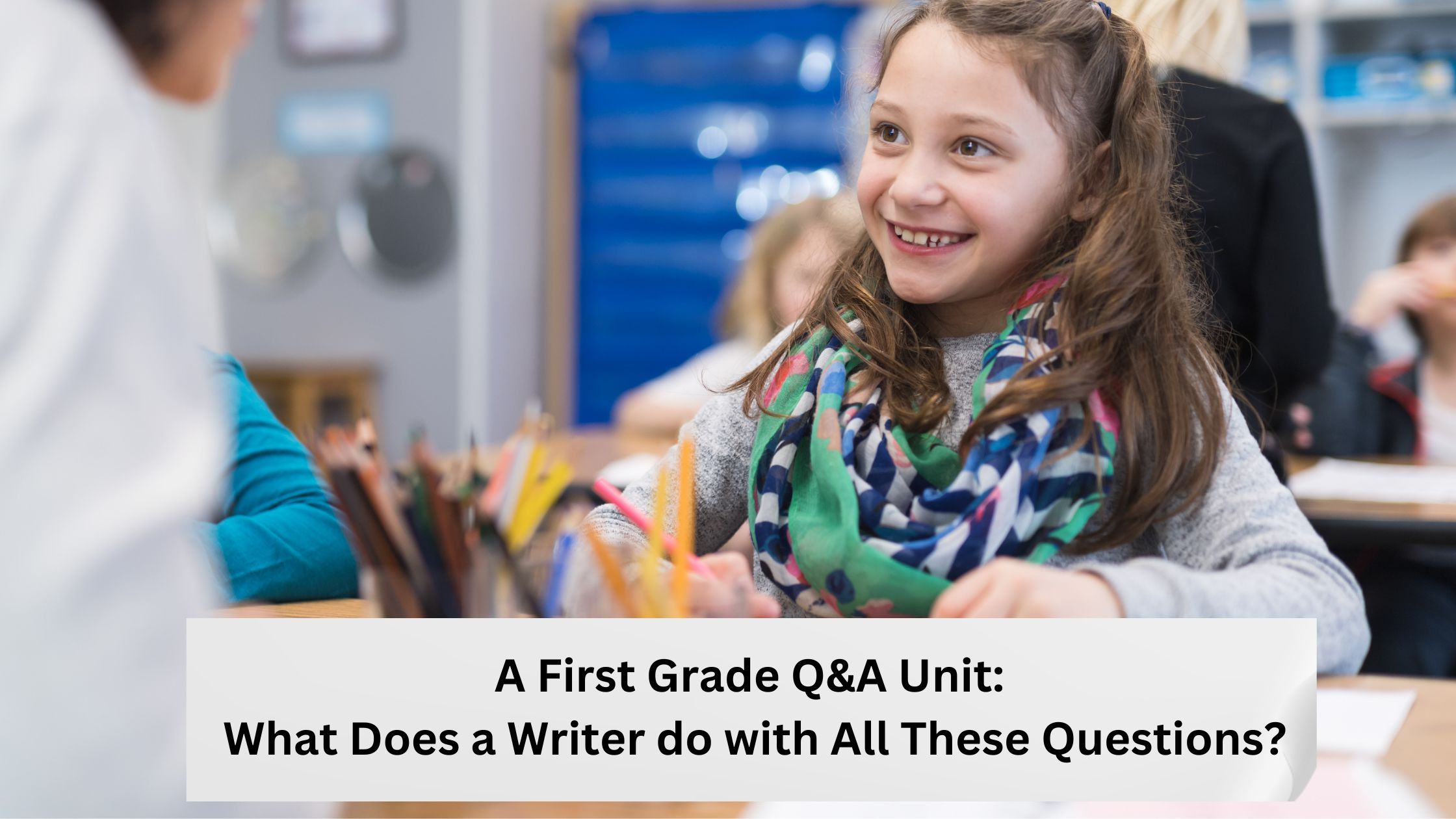A dormant writer: One who has the ability to write, but doesn’t.
How many dormant student writers are there? And, do our systems create them?
Having served as a district leader in curriculum and instruction, I have seen the power of systemic change that impacts students directly in the classroom. When done intentionally, collaboratively and strategically, a system can truly create engaged and passionate writers.
Or it can do the opposite.
Today, we will talk specifically about our dormant writers–those who can write and may even enjoy writing, but don’t because we haven’t created the systems in curriculum and instruction to make that happen.
Here’s an example student.
I was talking to a middle school student about his writing identity. Did he enjoy writing? Did he believe he was a good writer? Did he believe he was a writer who could learn strategies to be better? What topics, genres and modalities did he enjoy writing in?
It was a very enlightening and honest conversation.
This student said he actually likes to write, but not in school.
He is a dormant writer. But, he said, if given the opportunity to write for a podcast or on topics he loves, he absolutely would.
He said he likes to write under the following conditions:
- When he gets to choose his topic and sometimes his genre. When looking back, the last time he got to choose his topic was second grade. That’s a lot of years of being told what to write about.
- When he gets to have agency over his writing process. He struggles when he’s told directly what organizer to use, how to structure his writing and what he specifically needs to revise for. He shared when the teacher has this much control over his writing, he feels as though the work is just done “for the teacher” or “for the purpose of the assignment” and he doesn’t really care about it.
- He gets to choose his modality. He is VERY motivated by researching, organizing his information and sharing his content via a podcast.
- He gets to write for an audience. He said it provides a reason to do the work. “Why write if you’re not doing it for someone to read/listen to?” he said. (Such a valid question!)
He went on to share the amount of writing (or lack there of) that he has had this year. It is April 1 tomorrow and his last assignment as a middle school student was a “spooky story” in October. Here is what he asked:
How can I get better at writing if we never write? It’s just like basketball. How would I ever get better at basketball if I played for couple of weeks in October and then not again until April?
I asked this student to share with me why he didn’t like his last spooky story assignment.
I don’t care about spooky stories. That seems like a little kid topic. And, then we were told we had to include so many specific types of grammar- like so many verbs in our story or we would get a bad grade. I care about getting into the incentive, so I want to get good grades so all I focused on was putting in the required verbs. I didn’t really think about how to write a good story.
This is systems issue, not a teacher issue. So, what beliefs about writing instruction can we lay a foundation for in our K-12 curriculum and instruction departments? What research grounds our work and guides daily decision making for teachers?
Here are three non-negotiables that should be in every ELA department:
Consistent and Purposeful Writing Across the Year
Our student writers cannot get good at writing if we are just assigning work a few times a year. Research consistently shows a strong correlation between the amount of time students spend writing and their writing achievement.
- A meta-analysis by Graham & Perin (2007) found that frequent and extended writing practice significantly improves students’ writing quality, particularly for middle and high school students.
- Steve Graham (2018) suggests that students should spend at least 30-60 minutes per day on writing to see significant improvements.
- The Writing Next report recommends frequent writing sessions rather than just long assignments, meaning daily practice is more effective than occasional long essays.
Agency and Choice in Writing
There are so many reasons why choice and agency in writing matters. To start, if we truly want our students to be real-world writers, we have to stop dictating to them what graphic organizer to use, what their topic will be, every last detail that must be included in their writing, etc. Writing, in the real world, does not function like that. Our students not only benefit, but would thrive with writing that is more like the authentic experience real authors use.
Research strongly supports the idea that when students have choice and agency in their writing, they become more engaged, motivated, and produce higher-quality work. Here are some key findings:
- Self-Determination Theory (Deci & Ryan, 1985) states that autonomy is a key driver of motivation. When students choose their writing topics, they feel a sense of ownership, leading to greater investment in the task.
- Bruning & Horn (2000) argue that choice fosters positive emotional connections to writing, reducing anxiety and leading to more thoughtful, expressive work.
- Graham, Harris, & Santangelo (2015) found that students who wrote about self-selected topics produced longer, more complex, and higher-quality writing than those assigned topics.
- Graham & Perin (2007) found that when students have choice, they engage in deeper critical thinking because they must make decisions about purpose, audience, and structure.
Help Students Discover THEIR Writing Process
Research strongly supports helping students discover their own writing process rather than imposing a rigid, one-size-fits-all approach. When students understand and develop their own processes, they become more confident, effective, and independent writers. Here’s what the research says:
- Graham & Perin (2007) in their meta-analysis, emphasized that process writing instruction—teaching students to brainstorm, draft, revise, and edit flexibly—leads to better writing outcomes.
- Hacker, Keener, & Kircher (2009) found that students who reflect on their own writing processes become better at self-regulation, leading to higher-quality writing.
- Graves (1983) found that students write best when they have time to experiment with their own processes rather than following a strict sequence.
What’s the positive impact if we move in this direction from a systems standpoint?
We don’t have to guess. The research is clear.
Here’s what happens:
- Kids begin to believe in themselves as writers and they develop a positive identity as a writer. This impacts their overall belief of themselves a learner.
- Kids experience less anxiety with writing and learning in general because we have created conditions for them to be successful.
- Their reading achievement improves.
- They are better prepared for the writing they will do in college and life.
- They see a real-world reason for writing and are more likely to use literacy to impact their life as they age.
- They use their voice to impact others in a positive way. Something we need more of.
- They feel seen and valued.
- They are able to process their ideas, self-reflect, grow as a person and become a better human being.
Take time to look at your systems and make a plan for growth over time. Build your knowledge as a leader and then build the knowledge of your teaching staff. Capitalize on your teacher leaders in implementing these beliefs.
And reduce the number of dormant writers you have (along with reluctant, struggling and apathetic writers)!



Leave a Reply